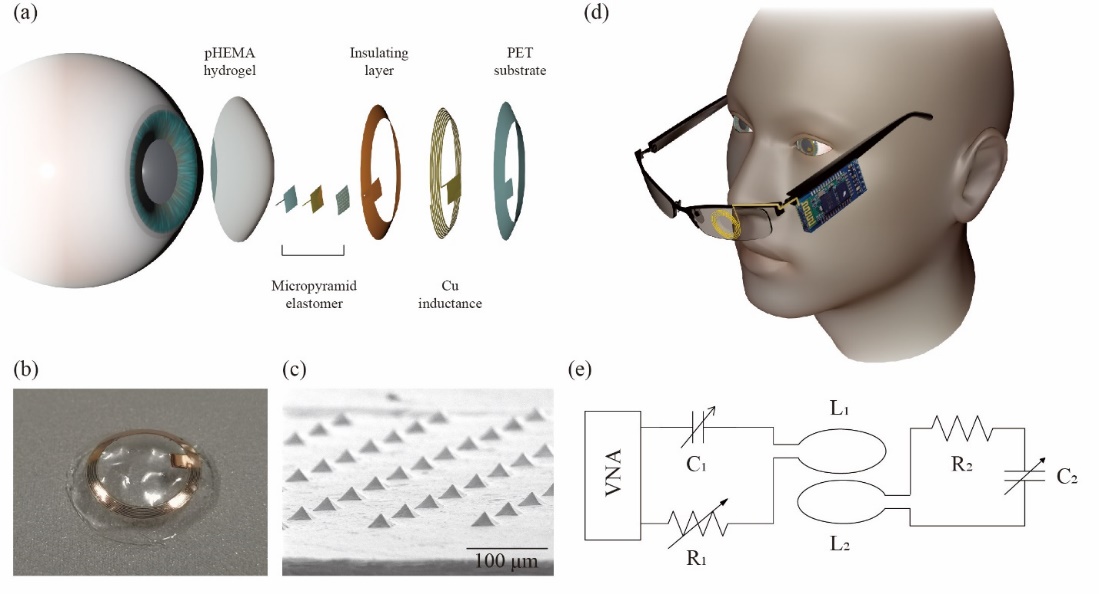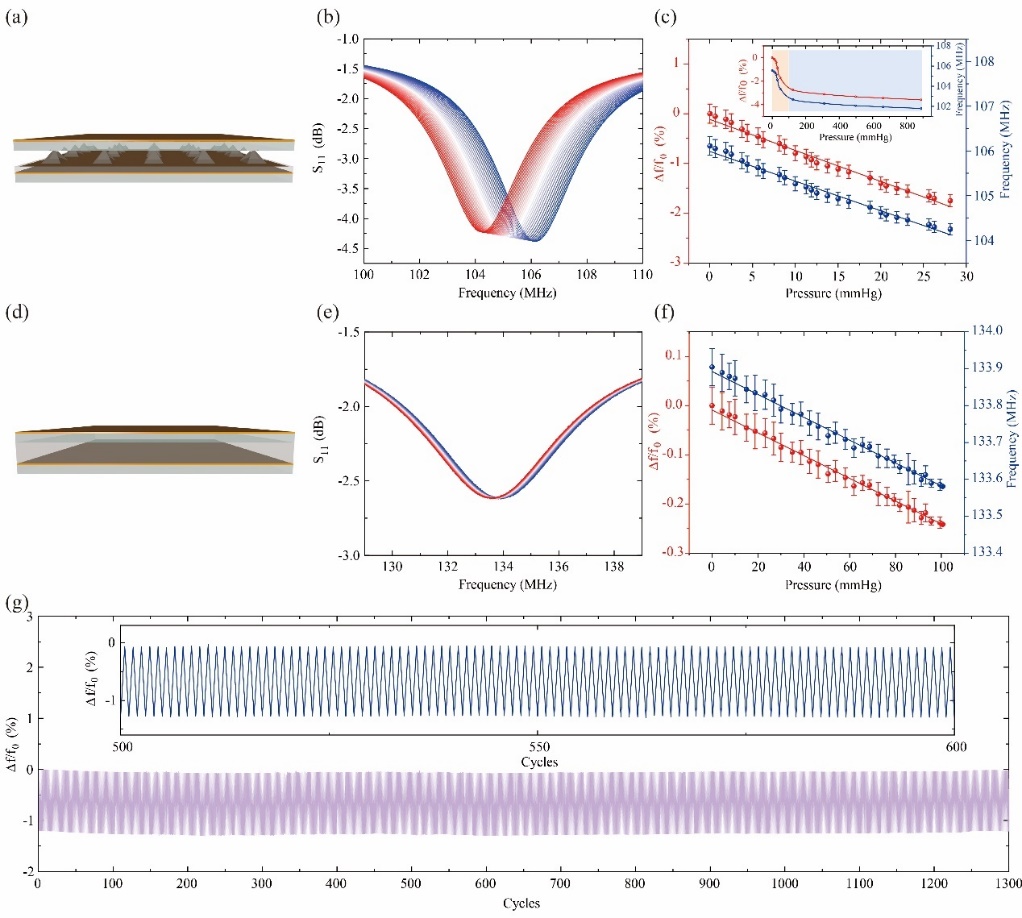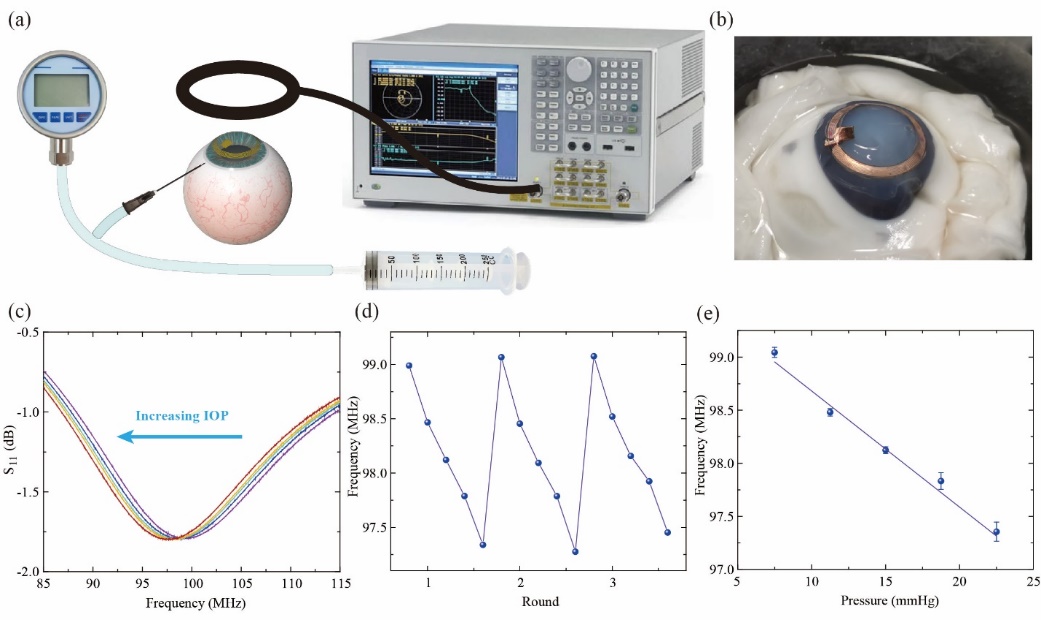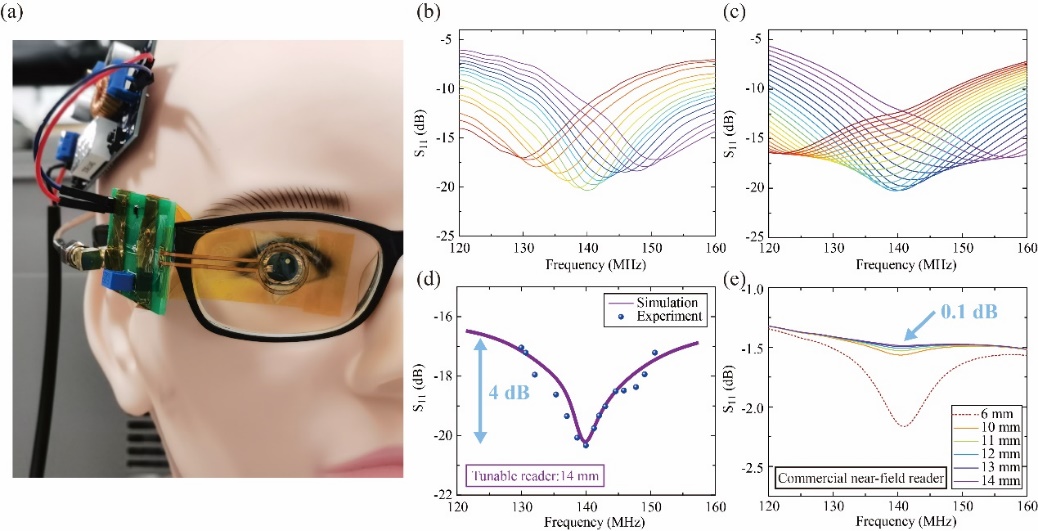Introduction:
Recently, the research group led by Prof. Fei Xu from College of Engineering and Applied Sciences, Nanjing University, incorporated with Tongji Hospital and made important progress in the smart contact lens. They proposed a method for producing asafe and reliable hydrogel-based smart contact lens for LCR-based wireless IOP monitoring. Employing a conformal stacking technique, the swelling problem of hydrogel materials was solved, making electric circuits successfully integrated with hydrogel-based contact lenses. And a pyramid-microstructured dielectric elastomer was produced conformally in the capacitive pressure sensor on the spherical pHEMA hydrogel substrate, resulting in enhanced sensitivity and repeatability. A solid foundation was established for preparing the smart contact lens, making it a platform for healthcare and human-machine interaction.The manuscript entitled Hydrogel-Based Smart Contact Lens for Highly Sensitive Wireless Intraocular Pressure Monitoring is published on ACS Sensors (ACS Sens. 2022, 7, 3014−3022).
Background:
Eyes are the window of the soul, but also the natural semi-open interaction window between the human body and the outside world. The smart contact lens for medical health, VR/AR, and human-machine interaction is one of the important development directions of wearable flexible electronics.Intraocular pressure (IOP), a dynamic quantity with a circadian rhythm, plays a crucial role in ophthalmic medicine, especially in glaucoma treatment and ocular postoperative rehabilitation. Therefore, there is a rapidly-increasing demand for real-time diurnal and nocturnal IOP monitoring. Goldmann applanation tonometry, the gold standard medical instrument for IOP monitoring, has time and space constraints, resulting in the lack of continuous and real-time IOP monitoring techniques and accurate IOP measurement techniques during the nocturnal periods. Soft contact lenses have proven to be excellent candidates for IOP monitoring by detecting the expansion of the cornea.There are comprehensive challenges in the design and production of smart contact lenses for IOP monitoring. The flexibility, view window, hydrophilicity, and oxygen permeability of the smart contact lens should be considered because of the special requirements of thehuman eye. The pHEMA hydrogel, a commercial contact lens material, guarantees the safety and comfort of smart contact lenses for long-term use. However, it is difficult to integrate hydrogel-based contact lenses with rigid electric circuits, owing to the structural variation caused by swelling of the hydrogel material.Soft pyramid microstructures are one of the best ways to enhance the sensitivity of pressure sensors. However, it is difficult to produce spherical pyramid microstructures for contact lenses. Thus, methods to fabricate hydrogel-based smart contact lenses with spherical pyramid microstructures are needed.
In this work, the research group proposed a method for producing a hydrogel-based smart contact lens for LCR-based wireless IOP monitoring that uses a conformal stacking technique to solve these problems. Using precise structural designs and multiple preparation techniques, the electronic components and the spherical pHEMA hydrogel substrate are designed to have a radius consistent with that of the human cornea. A pyramid-microstructured dielectric elastomer was produced conformally in the capacitive pressure sensor on the spherical pHEMA hydrogel substrate.When the IOP increases, the expansion of the cornea results in deformation of the contact lens. The parallel-plate capacitive pressure sensor detects the deformation of the lens and monitors the variation in IOP. By connecting the capacitive sensor to an inductance coil, an LCR resonator is built, and the variation in capacitance can be detected wirelessly using the resonant frequency. To increase the sensitivity, a pyramid-microstructure dielectric elastomer is employed between the two parallel-plate electrodes of the capacitive sensor.It has a lower elastic modulus, resulting in a greater degree of deformation under the same pressure. And the effect dielectric coefficient of the capacitive sensor changed with deformation because of the varying volume proportion of air and elastomer. A 1300 circles compression test with a 16 mN load was performed to demonstrate the repeatability and stability of the sensor. The smart contact lens, which has great sensitivity and repeatability, was employed to wirelessly monitor the IOP of the in vitro porcine eye.The smart contact lens had a linear response and exhibited a high relative sensitivity of 1.101 ‰ mmHg-1 for IOP. The mean deviation was 0.30 mmHg. In addition, a glasses-integrated impedance-matching tunable reader (IMTR) for long-distance (14 mm) reading with the lens was also demonstrated, making the signal measurement equipment more portable for daily use.
This work was supported by the National Key R&D Program of China and the National Natural Science Foundation of China.
Link of the paper:https://pubs.acs.org/doi/10.1021/acssensors.2c01299?ref=pdf
Quick view of the images:

Figure 1. Wireless hydrogel-based smart contact lens system.

Figure 2. Characterization of the LCR resonators.

Figure 3. Wireless IOP measurement on in-vitro porcine eyes.

Figure 4. Remote reading based on a glasses-integrated impedance-matching tunable reader.

